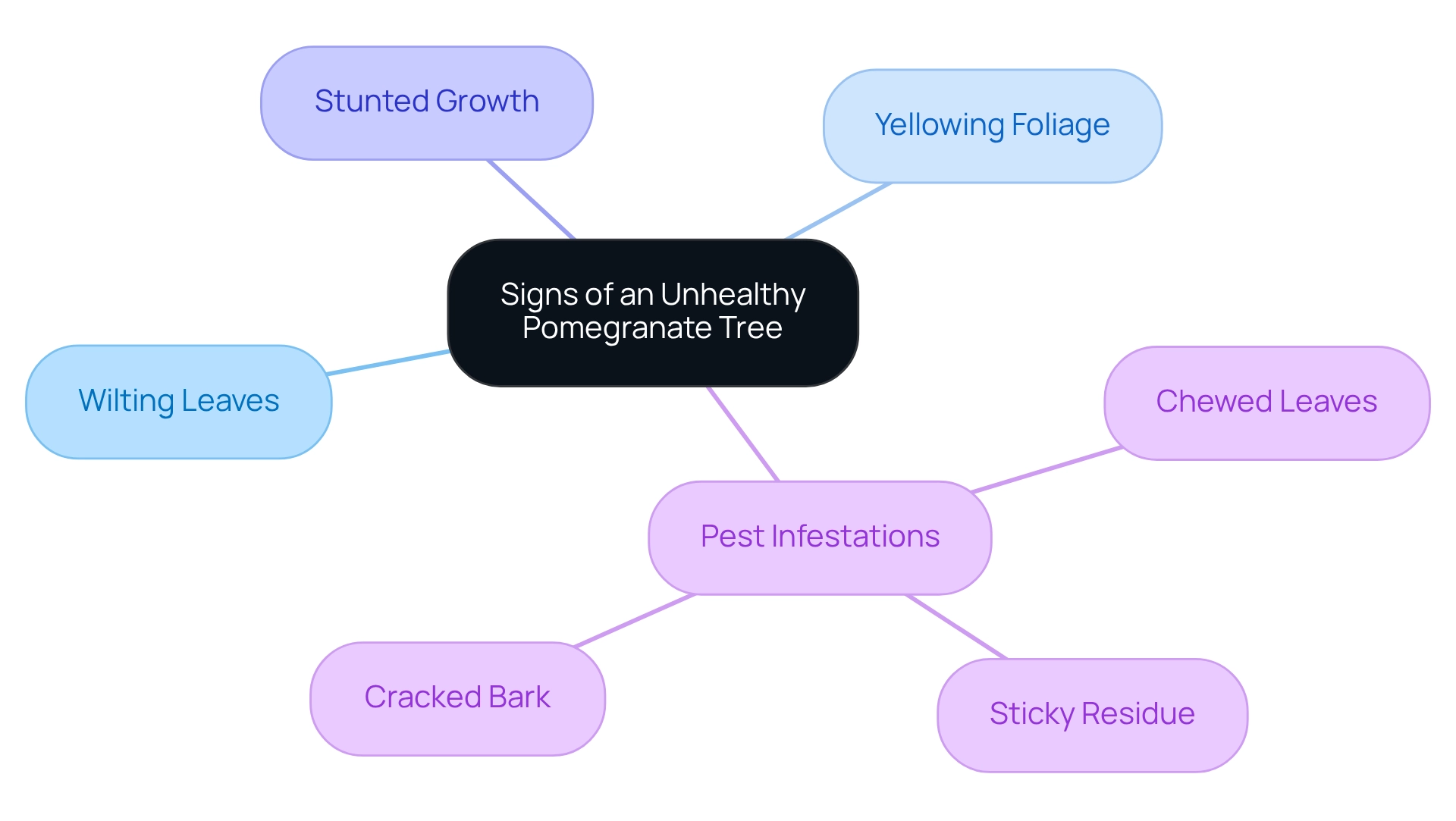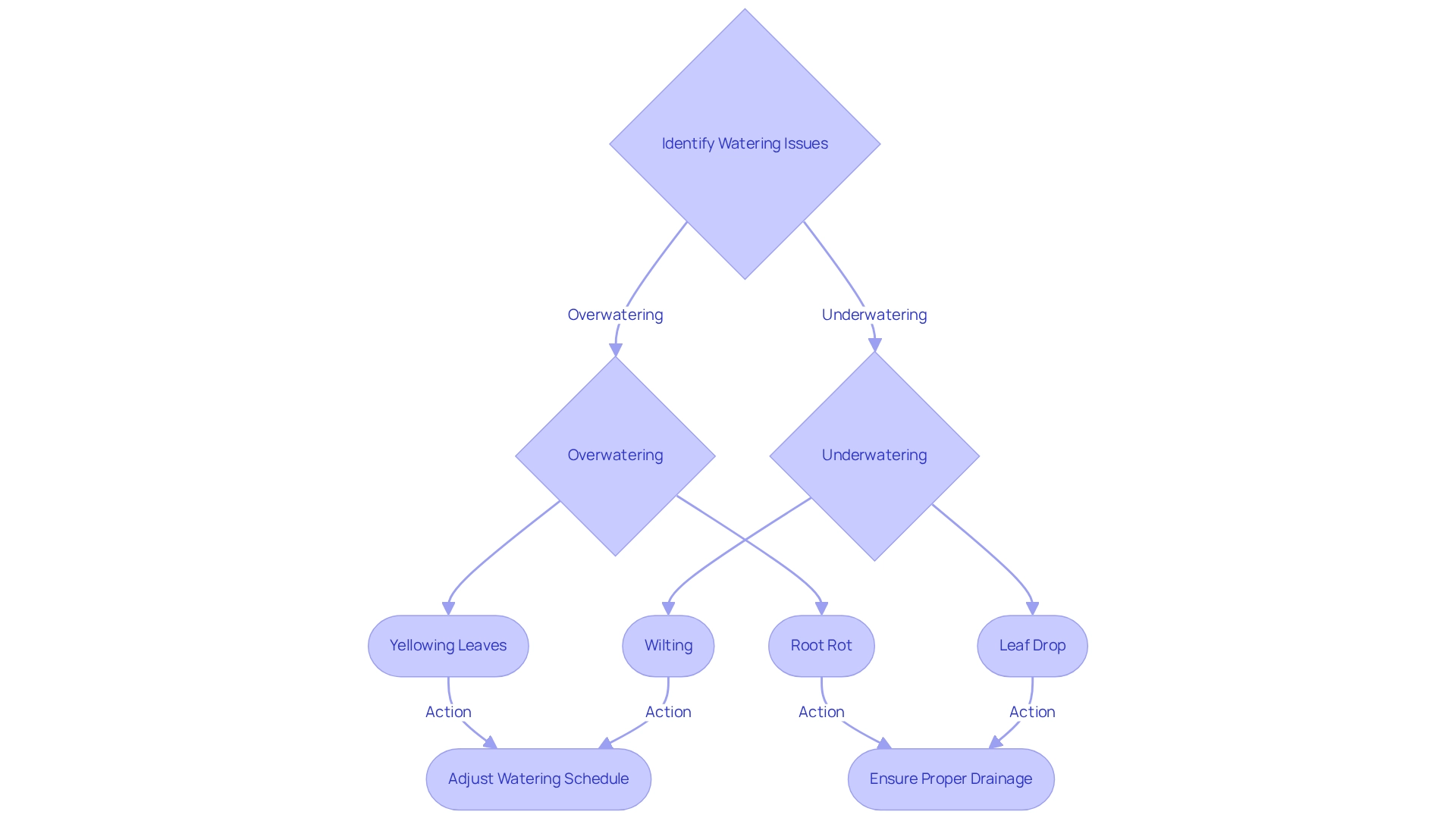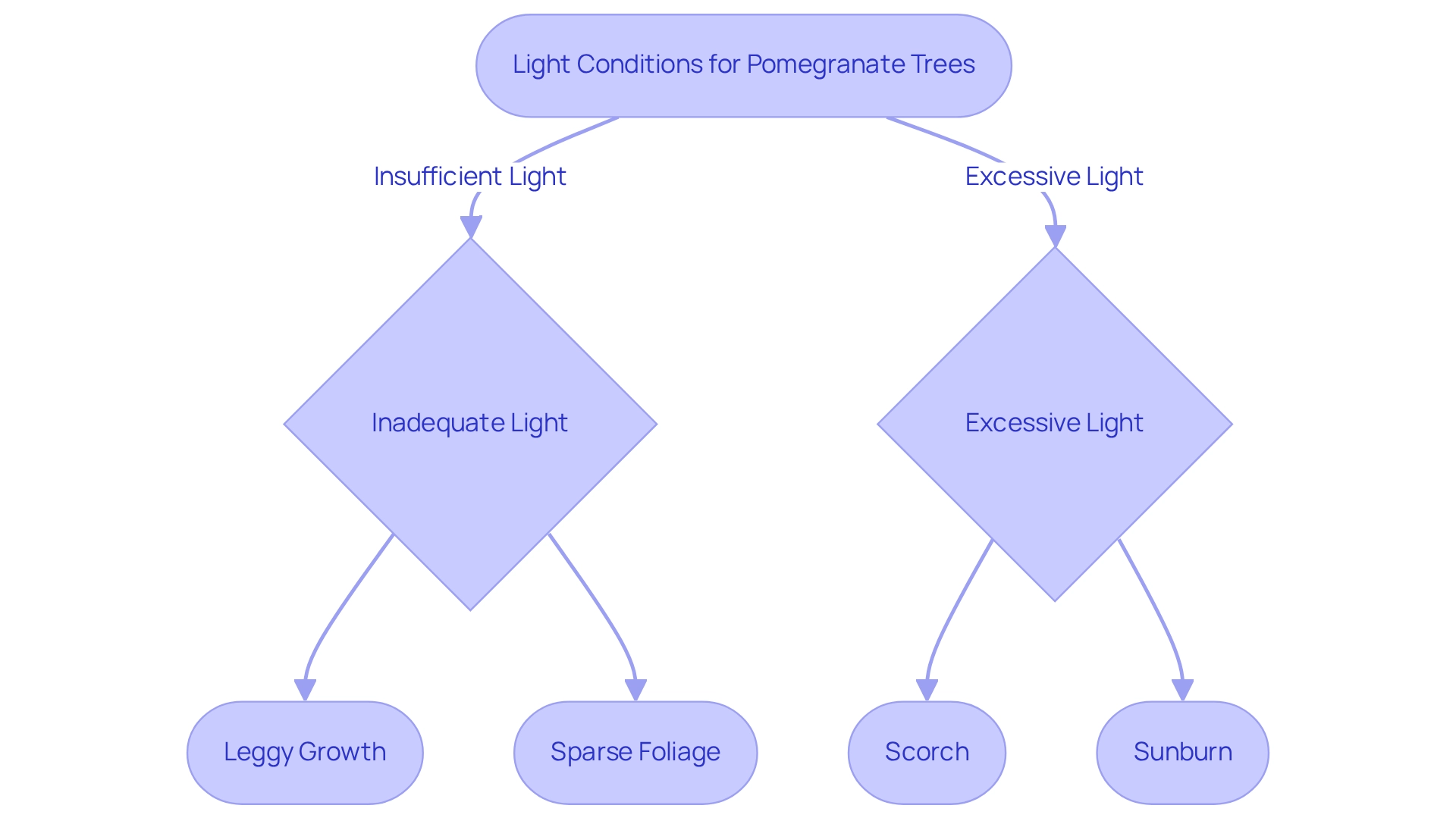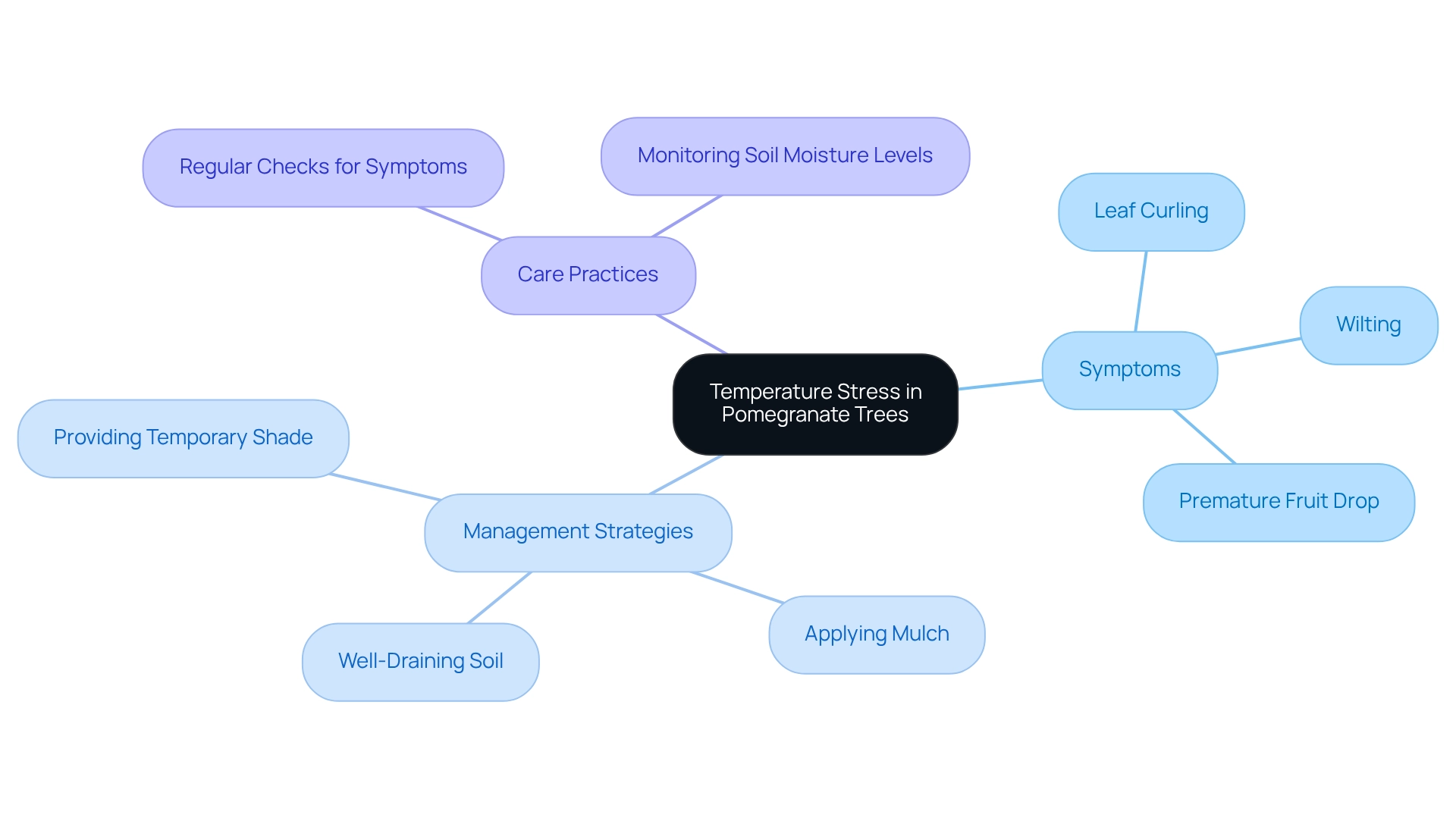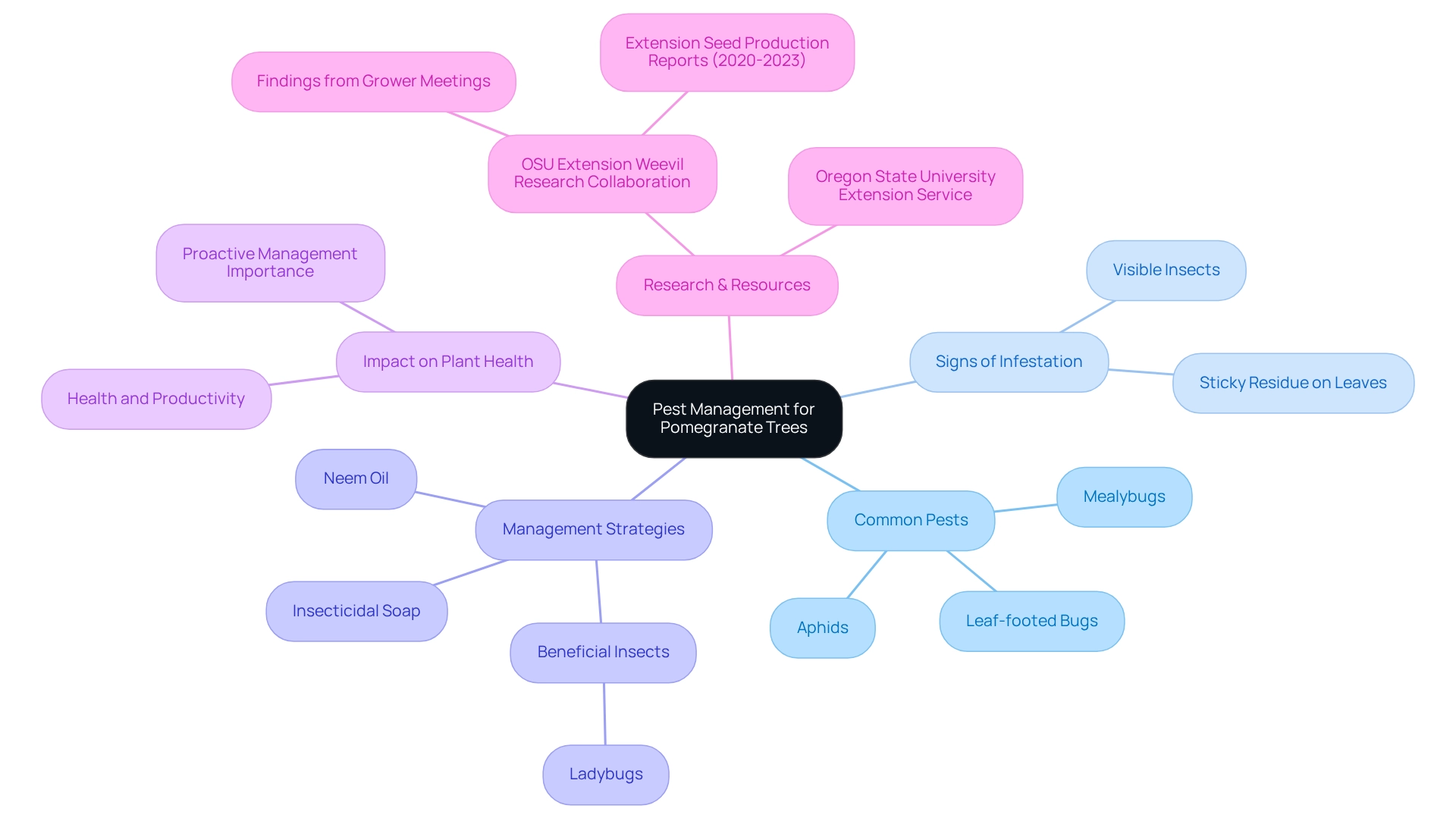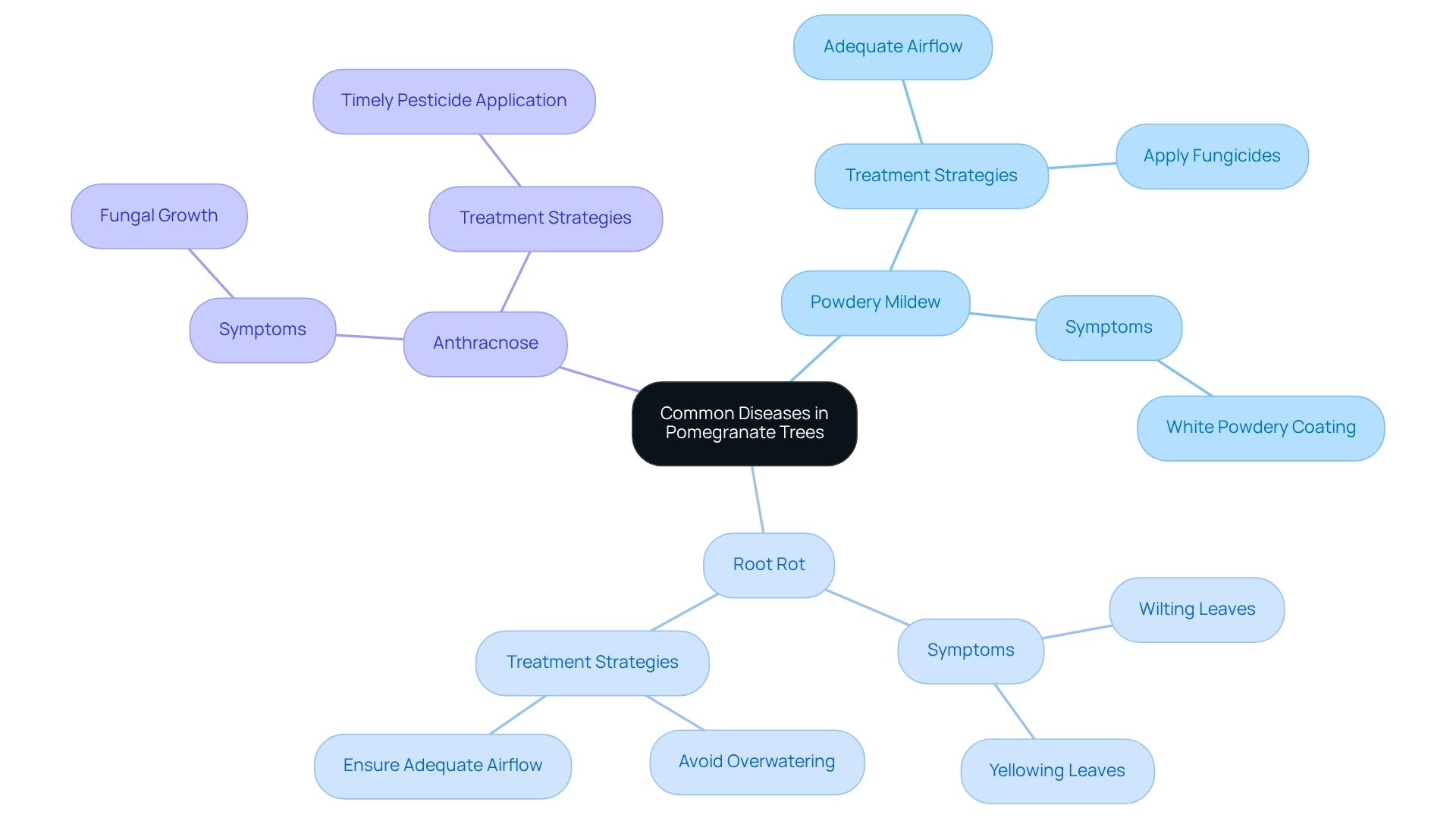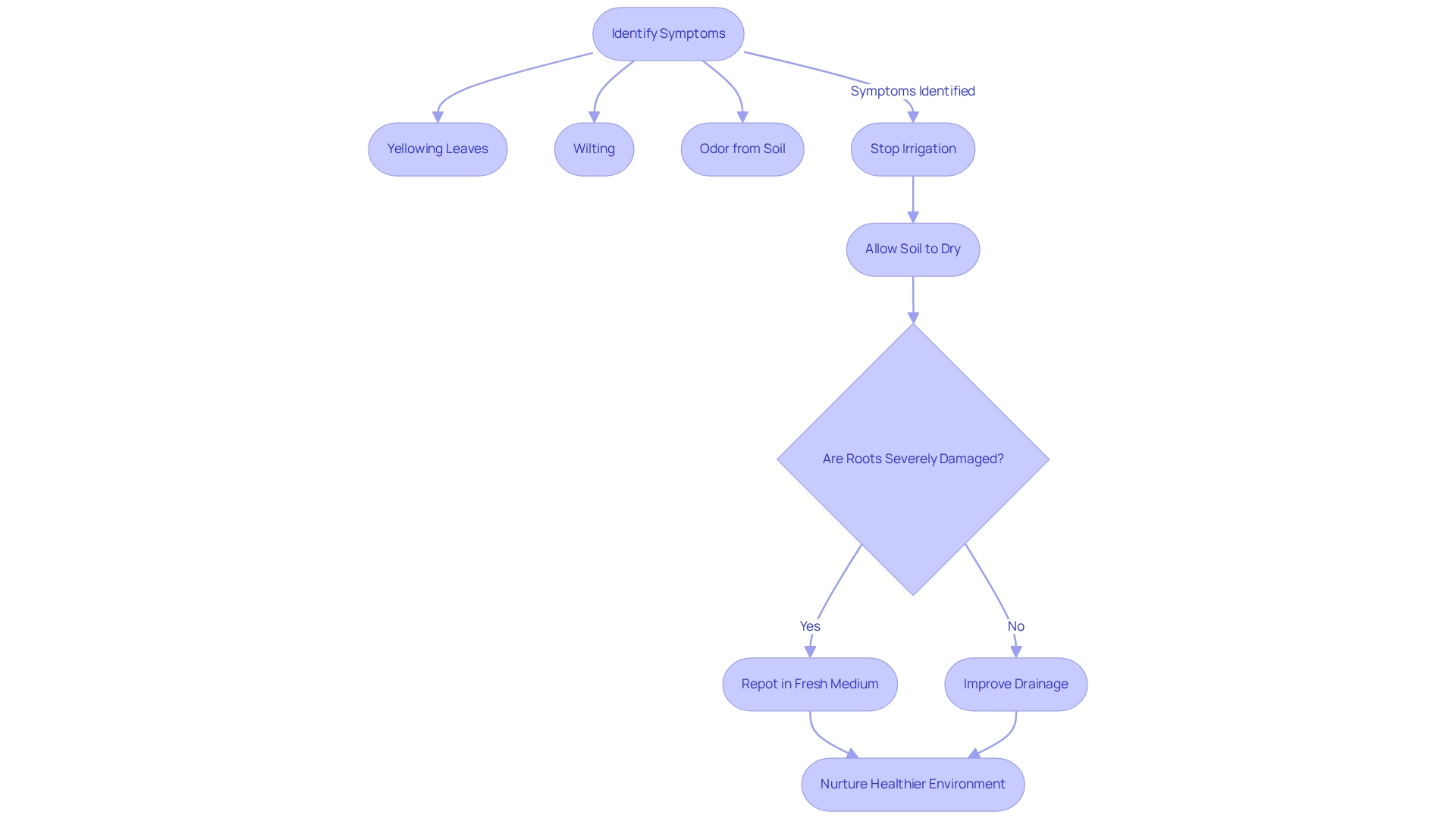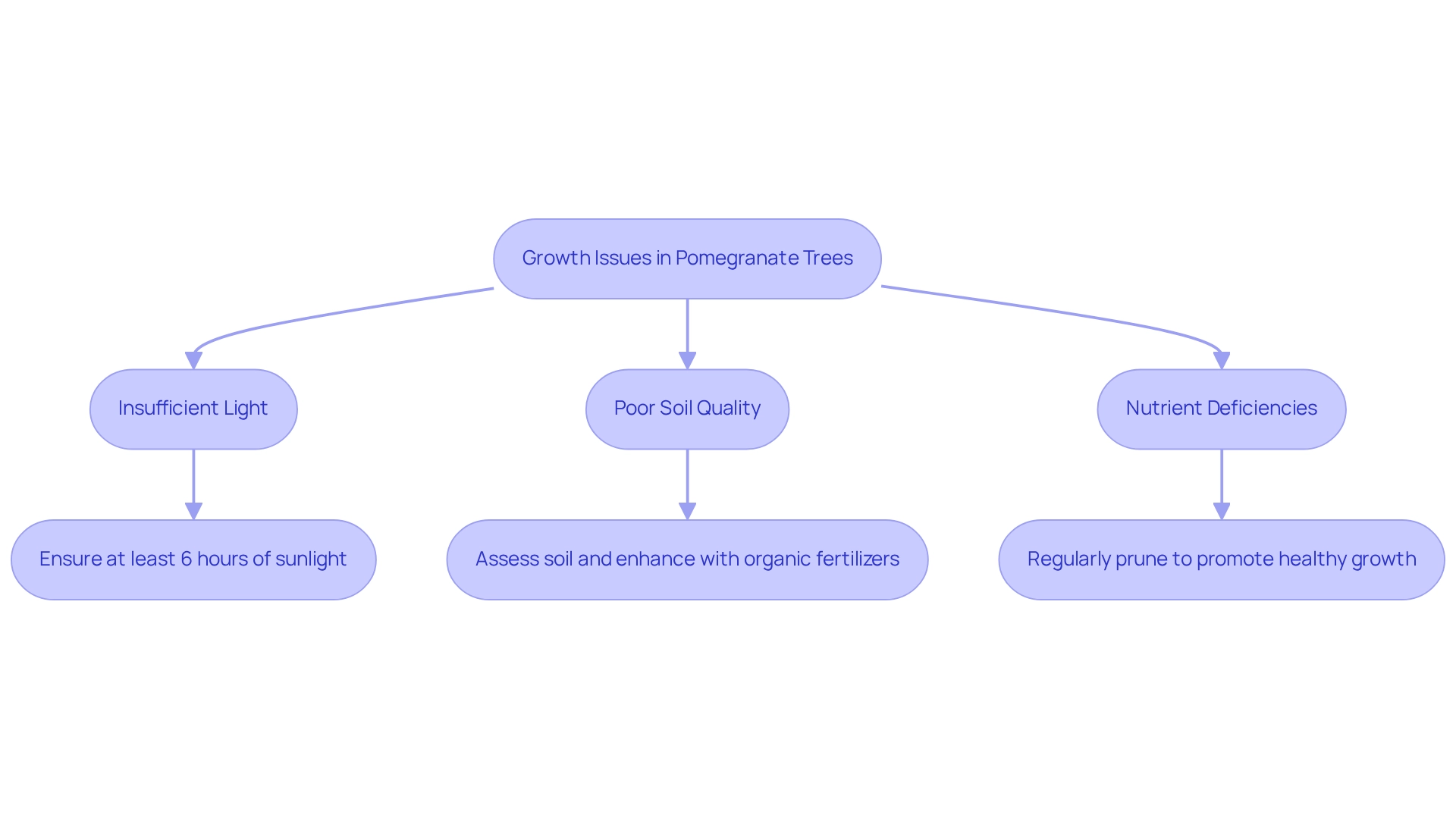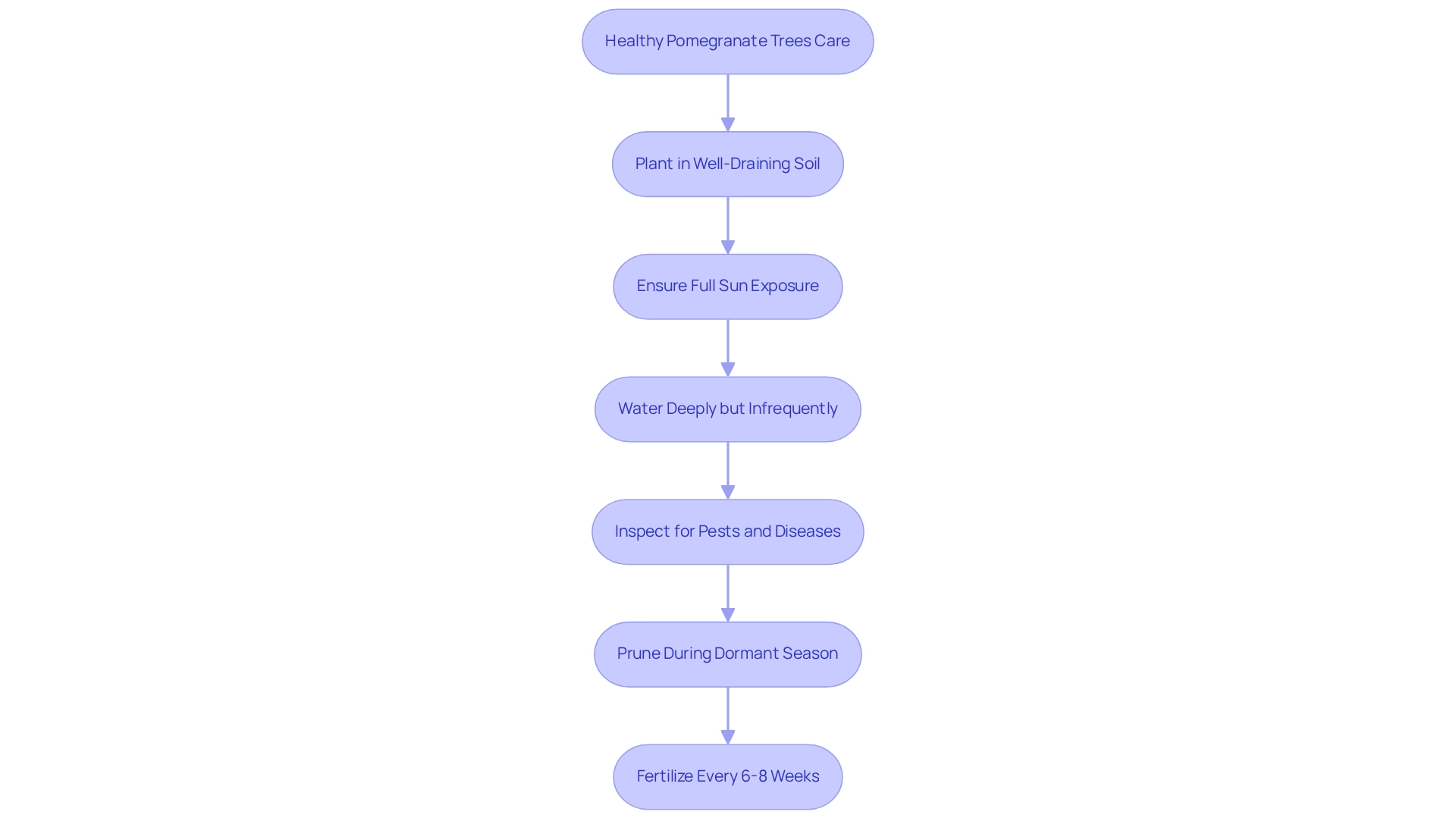In the world of home gardening, few fruits captivate us quite like pomegranates. Their vibrant color and rich flavor not only enhance the beauty of any garden but also promise a bountiful harvest of delicious fruit. Yet, cultivating healthy pomegranate trees can feel daunting at times. We understand that navigating the challenges of gardening requires both knowledge and diligence. From recognizing signs of distress to implementing effective care strategies, it’s essential to ensure your trees thrive.
This comprehensive guide is here to support you on your gardening journey. We’ll explore essential practices, address common issues, and share expert advice to empower you in your quest for fruitful success. Together, we can nurture our gardens and enjoy the rewards they bring.
Everglades Farm: Quality Pomegranate Trees for Thriving Gardens
At Everglades Farm, we understand the joy and challenges of nurturing a garden. That’s why we offer a delightful collection of vibrant, high-yielding fruit-bearing plants as part of our Fast-Growing Trees collection. Our goal is to ensure that you, as a home gardener, receive healthy, robust specimens that produce fruit swiftly, bringing a sense of accomplishment and satisfaction to your gardening journey.
Our fruit-bearing plants typically reach a height of 3-4 feet and are celebrated for their plentiful yields. Imagine the joy of harvesting fresh fruit from your own backyard! We take great pride in our
commitment to quality, evident in our meticulous packaging and shipping methods that protect the integrity of your plants during transit.
By choosing a trusted nursery like Everglades Farm, you enhance your chances of growing flourishing fruit-bearing plants right at home. Picture yourself enjoying the rewards of rapid-yield tropical foliage, all while receiving outstanding customer support from our caring team. We’re here to help you every step of the way, ensuring your gardening experience is both fulfilling and enjoyable.
Signs of an Unhealthy Pomegranate Tree: Key Indicators to Watch For
As a gardener, you may find yourself worried when your pomegranate tree shows signs of distress. Frequent indicators of an unhealthy plant include:
- Wilting leaves
- Yellowing foliage
- Stunted growth
It’s important to pay attention to these symptoms, as they can signal that your plant needs a little extra care.
Additionally, keep an eye out for pest infestations. Have you noticed any chewed leaves or sticky residue on the branches? These can be
telltale signs that your pomegranate is under attack. If the bark appears cracked or peeling, it could suggest underlying health issues that need addressing. Regular monitoring of these symptoms is crucial; it allows you to take corrective actions promptly, ensuring your plant thrives.
Remember, gardening is a journey filled with learning experiences. By staying vigilant and responsive to your plant's needs, you can nurture it back to health and enjoy the fruits of your labor. You’re not alone in this; many gardeners face similar challenges, and together we can cultivate a beautiful garden.
Identifying and Resolving Watering Issues for Pomegranate Trees
The pomegranate tree flourishes with deep watering, yet it is sensitive to both overwatering and underwatering. Have you noticed yellowing leaves or root rot? These can be signs of overwatering. On the other hand, underwatering often leads to wilting and leaf drop, which can be disheartening. To effectively address these challenges, it’s essential to ensure
proper drainage and adjust your watering schedule according to the seasons. During dry spells, deep watering every two to four weeks is advisable, allowing the soil to dry out completely between sessions.
Did you know that it takes an average of 10-40 leaves to support a single fruit? This emphasizes the considerable effort that the pomegranate tree invests in producing fruit. Overwatering can severely affect the health of the pomegranate tree, leading to reduced fruit yield and vitality. It’s important to keep a close watch on moisture levels in the soil and adjust your watering methods accordingly. Look out for signs of overwatering, such as a lack of new growth and a general decline in plant vigor. Conversely, underwatering can be identified by drooping leaves and a lack of fruit development.
A case study on outdoor cannabis irrigation illustrates that simply sustaining moisture in the ground isn't enough for optimal crop performance. Even with sufficient watering, mismanagement can lead to disappointing yields, emphasizing the need for careful water application. As Leo Rivera, a research scientist, wisely points out, "Choosing the right sensor for monitoring soil moisture is crucial to avoid common pitfalls that compromise plant health." By recognizing these indicators and applying effective watering techniques, we can ensure our pomegranate tree remains healthy and fruitful. Together, let’s nurture our gardens and enjoy the rewards they bring.
Symptoms of Inadequate or Excessive Light in Pomegranate Trees
Pomegranate trees thrive when they bask in full sun, requiring at least six hours of direct sunlight each day. Have you noticed leggy growth or sparse foliage? These symptoms often indicate insufficient light. Conversely, too much sunlight can lead to scorch and sunburn on your beloved plant.
To create the perfect light conditions, position your pomegranate tree in a spot that enjoys abundant sunlight throughout the day. During those intense heat waves, consider using shade cloth to protect the delicate foliage. Remember, nurturing your plant with the right light will help it flourish beautifully!
Recognizing and Managing Temperature Stress in Pomegranate Trees
In warm climates, the pomegranate tree flourishes, thriving in temperatures ranging from 60°F to 95°F. However, like many of us, they can be sensitive to temperature changes. You might notice signs of stress, such as:
- Leaf curling
- Wilting
- Premature fruit drop
To help your trees cope, it’s essential to plant them in
well-draining soil. This simple step can prevent root rot and other health issues, allowing your trees to grow strong and healthy. Applying mulch can also be beneficial, as it helps regulate soil temperature and provides insulation against the heat.
During those scorching days, consider offering your trees some temporary shade to protect them from sunburn and further stress. It’s important to remember that while some pomegranate varieties may show resistance to certain pests and diseases, none are entirely immune. This highlights the need for our attentive care. Regularly checking for symptoms like yellowing leaves or a decline in overall health can be crucial, as these may indicate underlying temperature-related issues.
A case study reminds us that choosing the right site and preparing the ground properly are vital for cultivating robust fruit plants. By understanding and managing temperature stress—such as regularly checking soil moisture levels—we can significantly enhance the health and productivity of our beloved pomegranate tree. Together, let’s nurture our gardens and watch them thrive.
Common Pests Affecting Pomegranate Trees and How to Combat Them
Pomegranate trees can face challenges from common pests like aphids, mealybugs, and leaf-footed bugs. You might notice sticky residue on leaves or see these insects, signaling an infestation. To help your plants thrive, consider inviting beneficial insects like ladybugs into your garden, as they naturally prey on aphids. You may also find that using insecticidal soap or neem oil can be effective in managing these pesky populations. Regularly checking your plants is essential; being proactive in addressing any signs of infestation can help halt the spread and minimize damage.
It’s important to recognize that pest issues can significantly impact the health and productivity of your pomegranate tree as well as other fruit-bearing plants. Proactive management is crucial for successful cultivation, ensuring that your gardening efforts yield the best results. When your pomegranates have developed a
deep red color and feel heavy for their size, they are ready to be harvested. This highlights the importance of maintaining plant health through effective pest control.
As Christy Tanner noted, "In collaboration with the Oregon Clover Commission, the Oregon State University weevil research team presented its results at four grower meetings and one OSU Extension-led workshop." This underscores the value of ongoing research and education in pest management. The OSU Extension Weevil Research Collaboration case study provides valuable insights into successful pest management practices, showcasing effective strategies that can greatly benefit your fruit cultivation journey.
For further expert advice, the Oregon State University Extension Service is a fantastic resource for home gardeners, offering answers on various gardening topics. Remember, the cultivation of the pomegranate tree in California accounts for just 2.3% of the total fruit and nut crop acreage, which emphasizes the need for efficient pest control to enhance this delightful fruit. Together, we can nurture our gardens and enjoy the fruits of our labor.
Identifying Common Diseases in Pomegranate Trees: Symptoms and Treatments
Pomegranate trees can face a range of challenges, particularly illnesses like powdery mildew and root decay. Powdery mildew manifests as a distinctive white powdery coating on the leaves, while root rot shows symptoms such as yellowing leaves and wilting. To effectively manage these issues, it’s crucial to ensure
adequate airflow around your plants and to avoid overwatering, which can exacerbate root decay. Applying suitable fungicides at the first signs of powdery mildew can help curb its spread.
Regular inspections of your fruit plants are vital for early detection of these diseases. If you notice symptoms like a white powdery coating or wilting leaves, it’s important to take immediate action to prevent further damage. For instance, one farmer faced significant losses due to anthracnose, a fungal disease that led to the destruction of 500 pomegranate trees, despite following horticultural advice. This underscores the importance of timely intervention and the implementation of effective treatment strategies.
Experts encourage gardeners to familiarize themselves with the signs of these ailments and to take preventive measures, such as ensuring sufficient spacing between plants for airflow and closely monitoring soil moisture levels. Ravindra Hakare, an additional director in horticulture, emphasizes, "The anthracnose blight is quite common when it rains heavily, and farmers need to react quickly by spraying the necessary pesticides on their crops. Otherwise, the black fungus will grow in the plants, which will attract pests and ruin the fruits." By staying alert and proactive, you can significantly enhance the health and productivity of your fruit-bearing trees.
Statistics indicate that diseases like powdery mildew can affect up to 30% of crops in certain areas, highlighting the need for effective management strategies. Additionally, innovative methods such as CRISPR TALENS gene-editing technology are being explored to promote resistance in crops like wheat against powdery mildew, potentially paving the way for future solutions in fruit disease management. By integrating these insights and strategies, we can better protect our fruit plants from common diseases.
Identifying Root Rot in Pomegranate Trees and Recovery Steps
Root rot in pomegranate trees can be a distressing issue, often caused by excessive watering and inadequate drainage. You might notice symptoms like yellowing leaves, wilting, and even an unpleasant odor from the soil. These signs can be concerning, but rest assured, there are steps you can take to help your plant recover.
First, it’s important to stop irrigation and allow the ground to dry out. This simple action can make a significant difference. If you find that the roots are severely harmed, consider repotting your plant in fresh, well-draining medium. Improving drainage in the planting area is crucial to prevent future occurrences of root rot, as this can give your pomegranate tree a new lease on life. By taking these steps, you’re not just addressing the current problem; you’re also nurturing a healthier environment for your plants. Remember, every gardener faces challenges, and with patience and care, you can overcome them together with your plants.
Addressing Growth Issues in Pomegranate Trees: Causes and Solutions
Are you noticing growth problems in your pomegranate tree plants? You’re not alone, and it’s completely understandable to feel concerned. Often, these issues can stem from insufficient light, poor soil quality, or nutrient deficiencies. It’s important to evaluate your plant’s light exposure—make sure it receives at least six hours of sunlight each day.
Next, take a moment to assess the soil. Are the nutrient levels adequate? If not, consider enhancing it with organic fertilizers to give your plants the boost they need. Remember, regular pruning is also a wonderful way to promote healthy growth. By removing dead or overcrowded branches, you’re allowing your pomegranate tree to thrive.
Gardening can be a journey filled with ups and downs, but with a little care and attention, you can nurture your plants back to health. You’ve got this!
Best Practices for Healthy Pomegranate Trees: Essential Care Tips
To nurture the health and productivity of your beloved fruit-bearing plants, let’s explore some essential care tips together. First, plant them in well-draining earth to prevent root rot, and ensure they bask in full sun exposure for optimal growth. Water deeply but infrequently, allowing the soil to dry out between watering sessions; this encourages
deep root development, which is vital for their well-being. Regularly inspect your plants for pests and diseases, such as aphids and fungal infections. Early detection is crucial—it can save you from significant damage down the line. Pruning during the dormant season is also recommended; it enhances airflow and minimizes disease risk, helping your plants thrive.
Fertilization plays a vital role in supporting growth and fruit production. Consider using a balanced fertilizer during the growing season; studies indicate that organic fertilizers can enhance the health and yield of fruit trees by up to 30%. By embracing sustainable practices, as highlighted in the case study on sustainable gardening, we can enhance our gardening experiences while contributing to the health of our environment. By following these best practices, including a fertilization schedule of every 6-8 weeks during the growing season, you can look forward to a bountiful harvest from your pomegranate tree, yielding sweet, juicy pomegranates and reinforcing the joy of home gardening. Together, let’s cultivate a garden that flourishes and brings happiness to your home.
Conclusion
Cultivating healthy pomegranate trees requires attention to various factors that influence their growth and productivity. As gardeners, we often encounter signs of distress, such as wilting leaves, yellowing foliage, and stunted growth. Recognizing these signals allows us to take prompt corrective actions. Understanding watering needs is crucial; both overwatering and underwatering can lead to serious health issues for our beloved trees. Additionally, ensuring they receive adequate sunlight and managing temperature stress are essential for maintaining vigor and preventing damage.
Proactive pest and disease management is vital for the success of our pomegranate cultivation. Regular inspections can help us identify common pests and diseases early, allowing for effective treatment and prevention strategies. By implementing best practices—such as planting in well-draining soil, providing adequate light, and adhering to a fertilization schedule—we can significantly enhance the health and yield of our pomegranate trees.
Ultimately, the journey to growing vibrant pomegranate trees is rewarding and achievable with the right knowledge and care. By applying the insights and strategies discussed, we can foster thriving pomegranate trees that not only beautify our gardens but also offer the sweet rewards of homegrown fruit. Embracing these practices not only contributes to our personal gardening success but also promotes a sustainable approach to nurturing the environment. So, let’s continue this journey together, nurturing our plants with love and dedication.
Ready to Plant a Pomegranate Tree?
Whether you’re craving fresh juice or a bold centerpiece for your garden, the pomegranate tree delivers. Choose your favorite variety and start growing something beautiful.
👉 Shop the Pomegranate Tree Collection
👉 Explore the Wonderful Pomegranate Tree
👉 Try the Compact Dwarf Red Variety
👉 Grow the Sweet Azadi Pomegranate Tree
👉 Browse All Exotic Trees
Frequently Asked Questions
What types of plants does Everglades Farm offer?
Everglades Farm offers a collection of vibrant, high-yielding fruit-bearing plants as part of their Fast-Growing Trees collection.
What is the typical height of the fruit-bearing plants from Everglades Farm?
The fruit-bearing plants typically reach a height of 3-4 feet.
How does Everglades Farm ensure the quality of their plants?
Everglades Farm takes pride in their commitment to quality, which is evident in their meticulous packaging and shipping methods that protect the integrity of the plants during transit.
What should I look for if my pomegranate tree shows signs of distress?
Signs of distress in a pomegranate tree include wilting leaves, yellowing foliage, and stunted growth. Additionally, watch for pest infestations, chewed leaves, sticky residue, and cracked or peeling bark.
How can I address overwatering and underwatering in my pomegranate tree?
Overwatering can be indicated by yellowing leaves and root rot, while underwatering often leads to wilting and leaf drop. It's important to ensure proper drainage and adjust your watering schedule according to the seasons, deep watering every two to four weeks during dry spells.
What is the relationship between leaves and fruit production in pomegranate trees?
It takes an average of 10-40 leaves to support a single fruit, highlighting the effort the pomegranate tree invests in fruit production.
What are the consequences of improper watering on a pomegranate tree?
Overwatering can lead to reduced fruit yield and vitality, while underwatering can cause drooping leaves and a lack of fruit development.
How can I monitor soil moisture effectively for my pomegranate tree?
Monitoring soil moisture is crucial to avoid overwatering and underwatering, which can compromise plant health. Using the right sensors for soil moisture can help manage watering effectively.

